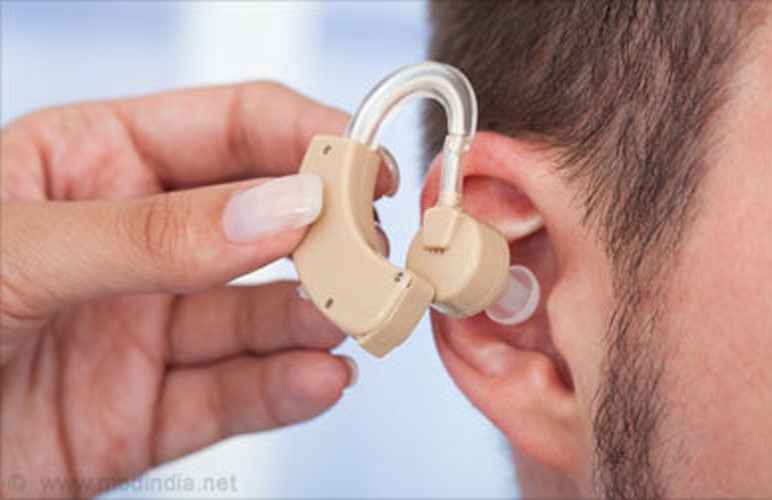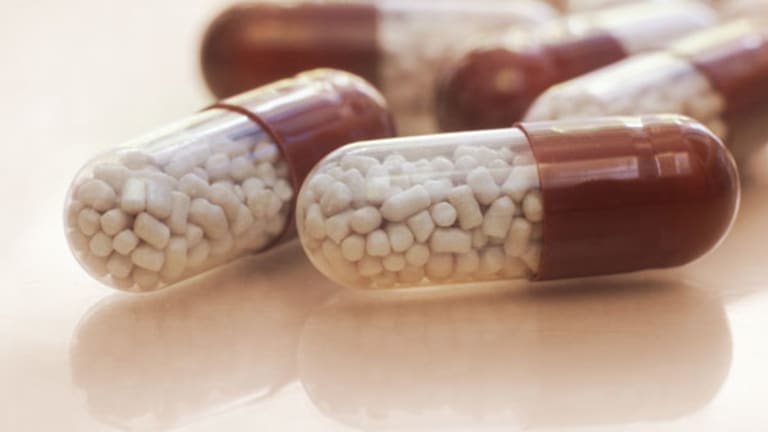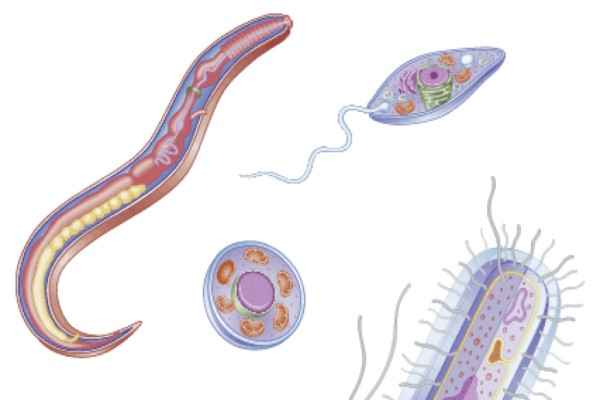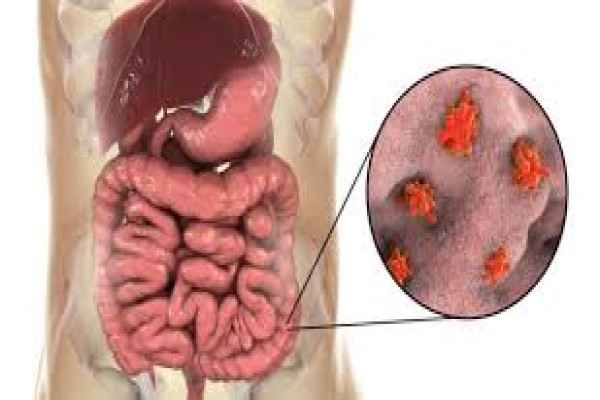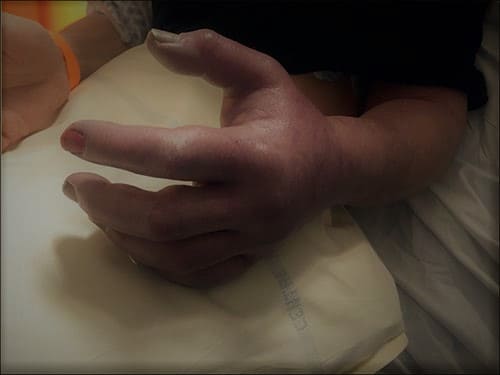Rash fever is
Viral rashes are symptoms of some type of viral infection. in which blisters or rashes appear on the body It mostly occurs in children and is often accompanied by a fever , so this type of fever is called rash fever. Nonviral rash may be caused by other organisms in the body, such as bacteria. or fungi like yeast This can cause diaper rash or allergic reactions occur. rash in hemorrhagic fever caused by viral infection This causes a red rash to appear on the skin all over the body, such as the chest and back. But no itching was found. Fever rash can occur anywhere on the body. The patient will have a fever, runny nose or cough as well.
Types of rash
There are many fungi that cause rashes. when vaccination was widely available making these viruses less common, such asFever from measles
Measles has a well-known name in the name of rubiola measles which is a virus found in the respiratory system But with the availability of widely used vaccines Causing this virus to not spread like in the past But if you haven’t been vaccinated against the virus. It can be measles. Symptoms of measles are as follows: After 3 to 5 days of fever, the rash appears. It’s a red spot along the hairline. These rash spots can turn into blisters that spread throughout the body.Cold sore or measles rose
Rose measles , often referred to as cold sores or 6th viral fever, is a common childhood fever caused mainly by the human herpesvirus 6, or HHV6. under 2 years old The most common symptoms of rose fever include:- Fever higher than 40.6°C for 3 to 5 days
- have a cough
- Have a rash , which looks like small dots on the stomach and may appear on other parts of the body It looks like a rose color. This is usually found after the fever has passed.
Fever rash from chickenpox
Chickenpox is caused by the herpes zoster virus. The chickenpox vaccination was introduced in the mid-1990s, so chickenpox is not as common as it was in the past. which was prior to the vaccination Almost every child has chickenpox. Chickenpox symptoms include:- low fever
- have blisters, itchy rashes that appear on the trunk and head It can spread to all parts of the body. Before it scabs and heals the wound until it’s healed.
Fifth disease
Fifth syndrome is often referred to as slap rash or lace rash. Caused by parvovirus B19, symptoms begin to be noticed before the rash appears. The most common occurrences in children are as follows : when these symptoms occur A rash appears on the patient’s face. which looks like a red mark like a slap on the face And the rash can spread to other parts of the body. which looks like a lace-like rash on the arms, legs and torsoFever caused by rubella
This measles, known as rubella which measles Makes vaccination widely used in many countries. The symptoms of rubella are as follows:- low fever
- red eyes
- have a cough
- runny nose
- have a headache
- swollen lymph nodes in the neck which will have swelling behind the ear
- A red or pink spot on the face that spreads to the body that can develop into a larger rash
- have a rash
hand, foot and mouth disease
Hand, foot and mouth disease is caused by the Coxsackie A virus. It usually affects children under the age of 5, but older children and adults can also get the disease. Hand, foot, and mouth disease symptoms include the following:- have a fever
- have a sore throat
- Blisters in the mouth
- There are red, flat spots on the palms and soles of the feet. and sometimes found on the elbows, knees, buttocks, and genitals
- Red spots can turn into blisters.
Treatment of hemorrhagic fever
Most of the time, fever rash will go away on its own. Because the rash is caused by a virus. But the doctor will advise you to follow the following instructions.- Have your child take painkillers. such as acetaminophen If allowed by a doctor The doctor will recommend how much to eat and how often to eat. and should not be given aspirin This puts them at risk for a condition known as Ray’s syndrome
- Give your child a bath with warm or cold water. if there is no fever If your child still has a fever Taking a cold shower raises your body temperature. which can cause trembling
- when your child takes a bath Use soap that is gentle on the skin. Pat the baby completely dry. Do not use products that may cause skin irritation.
- Wear loose, airy clothing for ventilation.
- Get enough rest and drink plenty of water.
- Talk to your doctor about using calamine lotion or other treatments for the rash.
- If the rash is itchy Children should not be allowed to scratch the area where itching occurs. which can cause infection
prevention of hemorrhagic fever
How to prevent rash to reduce the risk of exposure and infection Here’s how:- Get your child vaccinated against measles, rubella, and measles. and chickenpox
- Be careful about child hygiene. by allowing you and your child to wash their hands more often
- Teach your child to cover their mouth and nose. when coughing and sneezing
- Monitor your child when they are sick . and do not allow other children to get close to your child Until your child recovers from the fever
Statistics of rash fever patients in Thailand
These statistics are obtained from the Department of Disease Control, Ministry of Public Health. in the measles situation report In 2018-2019, it was found that for information in 2019 from the measles elimination project database It was found that between January 1 and December 27, 2019, there were a total of 9,134 suspected measles or rash cases, of which 4,520 were Thai nationals (90%). The female to male ratio was 1:1.3.home care advice
To make your child more comfortable during fever-related illnesses:- Have your child drink lots of water, warm liquids can be soothing.
- To help with a runny or stuffy nose:
- Use a cool mist humidifier. Clean after every use.
- For babies: Place a few drops of saline (saline) into the nose, then gently suck the mucus out with a syringe.
- For older children: Give 2 saline nasal sprays 3 times a day for 4 days.
- If the skin under your child’s nose hurts Put some petroleum jelly in it.
- Warn your child not to scratch their skin as this can make the rash worse.
- Keep your child’s nails short and even.
- Gently place a cold, wet washcloth over your child’s rash.
- keep your child cool Heat can make the rash more itchy.
- Use mild soap when showering and rinse thoroughly. Pat the skin dry (do not rub).
- when washing your child Use fragrance-free products (detergent, fabric softener, and dryer sheet)
How can you help prevent the spread of the virus?
All family members should:- Wash your hands properly with soap and water for at least 20 seconds, rinse and dry them. This is especially important after coughing or sneezing. and before eating or preparing food
- Without soap and water Use hand sanitizer with at least 60% alcohol.
- Clean tables, doorknobs, and other hard surfaces. with cleaners that kill viruses
When to consult a doctor
Seek medical advice:- If your child does not improve after you follow the advice above
- If you are worried that your child has measles
- If pus flows from the rash
- If your child has a fever and a rash that does not turn white when pressed
This is the source of our article.
- https://www.nhs.uk/conditions/rashes-babies-and-children/
- https://www.medicalnewstoday.com/articles/326462
Content and reviews come from experts by Bupa team.
หัวข้อที่เกี่ยวข้อง
ติดตาม
เข้าสู่ระบบ
0 ความคิดเห็น


